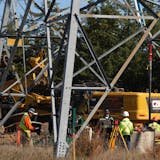A tiny airport straddling the far northern Minnesota-Canada border will shut down for good Friday after more than 70 years of operations, likely with little fanfare.
But for brief moments in its quiet history, the Piney-Pinecreek Border Airport was kind of famous precisely because it was located in both countries, a rarity in U.S. aviation.
“The world’s first binational airport,” declared the New York Times in a 1979 article, written in breathless fashion. Even now, it is one of just six general aviation airports nationwide that share a border with the neighbor to the north.
But officials from the Minnesota Department of Transportation (MnDOT) and the rural municipality of Piney in Canada, which jointly own the facility, have determined that maintenance and future upkeep are too costly to keep the lightly-used airport operating.
The unique international agreement required to run the public-use airport will expire Thursday, with the airport closing for good Friday.
“It’s unfortunate,” said David Beaudry, chair of the board overseeing the airport, and a member of the Piney Municipal Council in Manitoba. “But fiscal budgets are so tight; everything is so expensive.”
MnDOT estimates the airport will need about $3.8 million in short-term updates and repairs through 2028, and all told, almost $9.5 million over the next 20 years. A consultant’s report completed in August for MnDOT said the airport’s runway needs to be reconstructed, and its maintenance building and septic system replaced, among other repairs.
MnDOT officials say the cost to do the work would have been shared with Piney, but with an average of 200 aircraft using the facility a year, the price proved too high to justify the expense.


